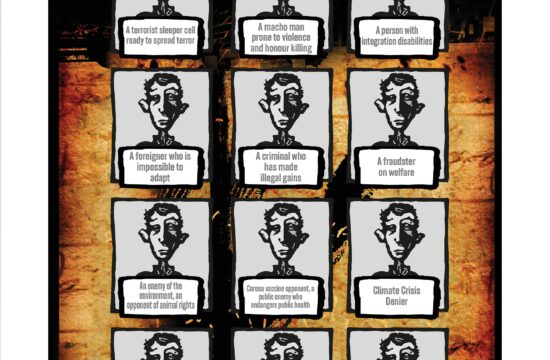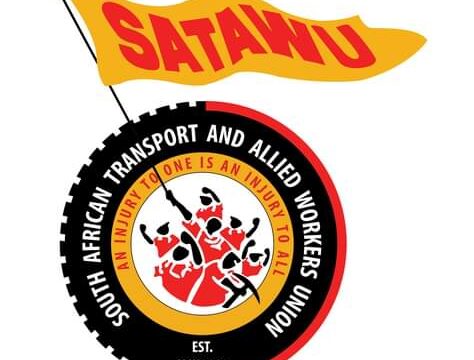Müslüm Kabadayı
TURKEY
The main theme of the 17th Karaburun Scientific Congress was determined as „Capitalism and Destruction“, and the earthquakes that took place in Turkey on February 6-20, 2023 added a current meaning to the natural and social destructions that have reached more dangerous dimensions due to wars-conflicts-migrations as well as the plundering of nature as a result of the structural characteristic of capitalism, which is described as „profit-based growth“. This paper aims to make our contribution to the discussion of this main topic by the congress by specifying the destructive aspects of capitalist policies in Hatay due to the magnitude of the problems caused by the devastation of the earthquake.
ABSTRACT
Capitalism always produces crises in a structural way. The reason being that capital accumulation is carried out through the war for profit between monopolies. The capital accumulation, which is produced both by the increase of profits and by the seizure of surplus value, is sustained by destructive competition. This is also the cause of wars.
Since the accumulation of capital created during the „etaist“ (statist), „import substitutionist“ and „aperturist“ periods of Turkish capitalism reached the limits of the organized development of capitalism, the 2001 crisis ushered in the period of „extractivism“. This term, used in Portuguese in 1996 to describe the exploitation of forest resources in Brazil, has been used in Turkey since 2003 to describe a massive looting and destruction plan that started on Mount Ida and went as far as Akbelen, and from there to the Amanos Mountain of Hatay and the olive groves of Dikmece. The Order of Plunder and Destruction, which we codify as „OPD“, is the economic policy of Turkey’s most ruthless monopolies, which accumulate enormous capital by plundering forests and mines.
Apart from the destruction of natural life, the OPD, which we specify with tables and graphs, leads to the social destruction of forest farmers and peasants who live in the forests because of the plundering of agricultural land. Among the regions and provinces most affected by this scheme, stand out the areas where the earthquakes occurred on February 6-20. Among those provinces, Adana dropped from 8th to 27th and Hatay from 27th to 39th in terms of socio-economic development between 2003-2017. Hatay, the province most affected by the February 6-20 earthquakes, shelters people living in tents and containers in the districts of Antakya, Defne and Samandağ, who face the risk of epidemics, since after 9 months of the earthquake the drinking water problem has not been solved. According to the results of the analysis conducted by Chamber of Physicians of Hatay and Environmental Engineers of Istanbul, Antakya triples the criteria of the World Health Organization in terms of toxic particles in the air, and the problem is aggravated due to the non-compliance with the regulations during the removal and transportation of debris.
It is known that Antakya, which is one of the few cities in the world as well as in our country in terms of its historical richness, architectural and cultural texture, confronts the danger of cultural destruction with the conversion of 307 hectares of protected area into a risk zone with the Presidential Decree No. 7033. Such destruction has been largely avoided thanks to the struggles carried out by the inhabitants of Hatay through associations, chambers, unions and platforms. However, the institutions that are supposed to provide public services in this area have yet to develop and implement regional and municipal conservation zoning plans. This problem needs to be solved urgently by the City Protection and Rescue Board, which will consist of experts from the scientific-technical and cultural fields.
INTRODUCTION
In Europe, especially in England, where capitalism was in its dawn, it is known that the initial (primitive) accumulation of capital takes hundreds of years. It is proved that the development of Turkish capitalism occurred in dependence on European capitalism, which had entered the imperialist phase, and that industrialization, especially in the first period of the Republic, with the support of the Soviet Union, was accelerated by statist capitalism (etaism). After 1950, when the capitalist enterprises in agriculture intensified with the relationship of dependence established with US imperialism, it can be said that the accumulation of capital was ensured under the rules of „import substitution“. Particularly, through the policy of „export-oriented capitalism“ or „export-oriented economy“, which was put into practice with the fascism of September 12, in addition to the intensive exploitation of labor for export, the privatization of the KITs (Public Economic Entreprises) allowed the flourishing of new conglomerates. We note that after these three stages of Turkish capitalism, which we have summarized in terms of capital accumulation regimes, a fourth stage took place, which overcame the 2001 crisis. So, what path did Turkish capitalism take with the AKP? The answer given to this question also serves us to explain an important feature of the great seismic devastation that took place on February 6-20 in 11 provinces, especially in Hatay.
THE PLUNDERING TENDENCIES OF TURKISH CAPITALISM
During the period of Özal’s presidency, who was the executor of the January 24 Decisions adopted to satisfy the demands of the Turkish monopolies and the imperialist states (especially the USA) under the fascism of September 12, industrial exports based on white goods were followed by „opening to the exterior“ in the textile and construction sectors. Capitalism, which is in constant structural crisis, initiated a practice of regulating the energy market in favor of the monopolies as a way out of the 2001 crisis in Turkey. Its purpose was to achieve capital accumulation by using mines, forests, water and wind as a source of mega-projects through the „great plunder“. Some people call this fourth regime of capital accumulation „extractivism“, which means „to dig, to excavate“. I think it is more appropriate to call it „GPD“, i.e., „great plunder and destruction“. To put the „GPD“ into practice, it was necessary for the working class to be disorganized and distanced from the class struggle and, therefore, social consent had to be obtained by resorting to religion. The 21-year-long rule of the AKP has been maintained as a regime in which imperialist countries, multinational companies and the Turkish bourgeoisie cooperate, and that capital accumulation regime is the main reason for the economic growth of religious sects and communities during this period, the CHP’s failure to defend secularism, and the religionization and commercialization of education.

 From the end of 2002, Turkish capital has been engaged in a massive looting plan in the fields of mining, forestry and energy. The following three tables show the clearest example of this. It is understood that there is a direct correlation between the rapid increase in the size of mining companies since 2016 in Table I and the gradual increase in the profitability ratio of the minerals sector since 2015 in Table II. Similarly, in Table III, the amount of wood in forest products has accelerated since 2003. In particular, the amount of industrial wood has increased rapidly. Likewise, there is also a gradual increase in mineral-based production in the energy sector. Considering these tables, one can understand why monopolies such as Cengiz Holding, Limak, etc., which flourish in these sectors and represent the most oppressive-exploitative-pirate tendencies of Turkish capital, cut down forests in many regions of the country and plunder mines for thermal power plants. The table IV clearly shows that the accumulation areas led by the food and textile sectors in 2003 lost their leadership to base metal in 20211. In summary, it can be easily stated that the capital groups, which try to explain themselves with dichotomies such as „Istanbul-Anatolia Capital“, „TÜSİAD-MÜSİAD“, „old-new“, etc., have actually benefited together from the
From the end of 2002, Turkish capital has been engaged in a massive looting plan in the fields of mining, forestry and energy. The following three tables show the clearest example of this. It is understood that there is a direct correlation between the rapid increase in the size of mining companies since 2016 in Table I and the gradual increase in the profitability ratio of the minerals sector since 2015 in Table II. Similarly, in Table III, the amount of wood in forest products has accelerated since 2003. In particular, the amount of industrial wood has increased rapidly. Likewise, there is also a gradual increase in mineral-based production in the energy sector. Considering these tables, one can understand why monopolies such as Cengiz Holding, Limak, etc., which flourish in these sectors and represent the most oppressive-exploitative-pirate tendencies of Turkish capital, cut down forests in many regions of the country and plunder mines for thermal power plants. The table IV clearly shows that the accumulation areas led by the food and textile sectors in 2003 lost their leadership to base metal in 20211. In summary, it can be easily stated that the capital groups, which try to explain themselves with dichotomies such as „Istanbul-Anatolia Capital“, „TÜSİAD-MÜSİAD“, „old-new“, etc., have actually benefited together from the 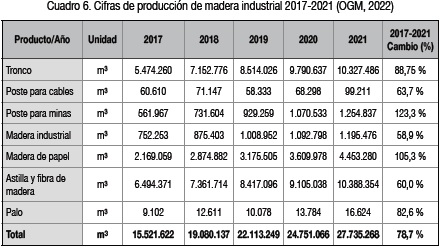 accumulation of predatory (primitive) capital during the AKP period, and therefore do not want this policy to change. Therefore, it is easier to understand why rural workers who lost their land, forests and olive groves to this regime of plunder are surrounded by sects. This is also why these groups of capital imposed the religionalization of all areas of life to prevent workers, laborers and the poor from organizing and opposing a regime of predatory accumulation in which exploitation multiplies, plundering destroys nature and wants to condemn the people to live in misery and hunger.
accumulation of predatory (primitive) capital during the AKP period, and therefore do not want this policy to change. Therefore, it is easier to understand why rural workers who lost their land, forests and olive groves to this regime of plunder are surrounded by sects. This is also why these groups of capital imposed the religionalization of all areas of life to prevent workers, laborers and the poor from organizing and opposing a regime of predatory accumulation in which exploitation multiplies, plundering destroys nature and wants to condemn the people to live in misery and hunger.
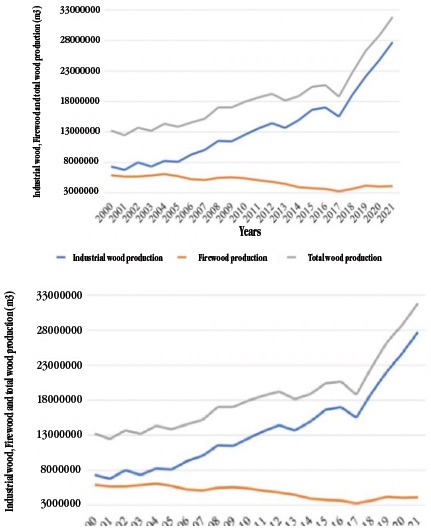 Once the general characteristics of the new predatory period of Turkish capitalism have been outlined, now we can better explain how the natural destruction of the earthquake was transformed into a capitalist destruction. The following table reveals, in this new predatory period symbolized by the AKP, the state of socio-economic development of the 11 provinces that were devastated on February 6 and especially Hatay, which suffered a second major devastation on February 20. When we examine the data for the first 14 years of predatory capital accumulation, we see that the 10 provinces hit by the earthquake have suffered a setback, that is, their resources have shifted to other provinces, especially to the western region, where predatory capital is concentrated. It is understood that Adana and Hatay suffered the greatest losses among the 10 provinces. This loss can be expected to double in Hatay with the earthquake.
Once the general characteristics of the new predatory period of Turkish capitalism have been outlined, now we can better explain how the natural destruction of the earthquake was transformed into a capitalist destruction. The following table reveals, in this new predatory period symbolized by the AKP, the state of socio-economic development of the 11 provinces that were devastated on February 6 and especially Hatay, which suffered a second major devastation on February 20. When we examine the data for the first 14 years of predatory capital accumulation, we see that the 10 provinces hit by the earthquake have suffered a setback, that is, their resources have shifted to other provinces, especially to the western region, where predatory capital is concentrated. It is understood that Adana and Hatay suffered the greatest losses among the 10 provinces. This loss can be expected to double in Hatay with the earthquake.
Socio-economic Development Ranking of the Provinces out of 81 Province
 (Source; DPT (State Planning Agency), “Socioeconomic Development Classification Study of Provinces”, Edition Number: DPT 2671, May, 2003, Republic of Turkey Ministry of Industry and Technology, “Socioeconomic Development Ranking Study of Provinces and Zones”, Sege 2017)
(Source; DPT (State Planning Agency), “Socioeconomic Development Classification Study of Provinces”, Edition Number: DPT 2671, May, 2003, Republic of Turkey Ministry of Industry and Technology, “Socioeconomic Development Ranking Study of Provinces and Zones”, Sege 2017)
PLUNDERING OF PARKS
According to the above table, it can be stated that during the period when the predatory capital accumulation policy of Turkish capitalism came into effect, the provinces in the earthquake zone were gradually „pulled to destruction“ in terms of economic and social development. Especially when the data from the 1970s and 1980s are carefully analyzed, we see that Hatay, which is among the top 15 provinces in terms of economic and social development in Turkey, is also among the provinces where the highest amount of taxes is collected in relation to its population. In spite of its high contribution to the gross national product, it is one of the provinces that do not receive the necessary share of the general budget and is one of the provinces with the lowest public investments. However, it is worth mentioning one more fact. Tosyalı Holding, which obtained a large share of the capital accumulation in the steel and metallurgical sector, which was extended with the privatization of the Iskenderun Iron and Steel Factory, which was established under the leadership of the Soviet Union and started production in the 1970s, has become one of the prominent monopolies of the predatory period. As a result of this feature, it is claimed that the „New Life Park“ called „Güvercinli Park“ in İskenderun, which suffered great destruction in the February 6 and 20 earthquakes, was handed over to Tosyalı Holding to be opened for construction. According to the perspective of the laborers, it is significant that this green zone is being attacked, in other words, that those who accumulate looting capital have chosen this park. Because in this park press statements and protests have long been organized in İskenderun.
THE SEISMICITY OF HATAY
Hatay is located at a geographical point where three major fracture zones converge. The Ölüdeniz (Lut) area in the south, the Eastern Anatolia area in the east and the Cyprus area in the west converge in the Amik plain. The presence of large earthquakes and major destructions in Antakya is due to this natural structure. Tuğçe Tezer, who is working on a PhD thesis about Antakya’s urban culture and architecture, synthesizes the history of these destructions as follows
„Antakya, as we all painfully realize today, is a seismic zone and a city that has suffered many large and irreparable earthquakes throughout its history. An earthquake of magnitude 7.5 in the year 115 killed 260,000 people, followed by another earthquake of magnitude 7 in the year 526 that killed 250,000 people. In Antakya, where 89 earthquakes of magnitude 6-10 have been recorded between 148 BC and 1896 AD and another 100 earthquakes of magnitude 4-6 between 1900-2000, two earthquakes of magnitude 7 in 1822 and 1872 are considered earthquakes that significantly changed the physical, social, cultural and economic fabric of Antakya. In spite of the fact that the area on which the historical settlement of Antakya was established has suffered great destruction in all these great earthquakes up to the present day, the inhabitants of Antakya have been building their cities on the traces of this ancient settlement throughout history.“2
Why is Antakya still being built in the same place despite the destruction? I would like to quote a news item on this subject, as we have expressed the answer to this question during the promotion of our book „Hatay and the Earthquake Reality“ in different cities.
“The fertility of Lake Amik and the Amik Plain, the vitality of Asi (Orontes), the protection of Mount Habib-i Neccar (Silpius)… Unfortunately, since the 1950s, these three important natural beauties have been taken away step by step from the people of Hatay by the plundering forces. Fertile land has been drowned in glass and concrete. Hatay province, about which seismicity and the fact that an earthquake is expected in the near future was announced in the Hatay Governorate report published in 2021, suffered the greatest damage from the earthquake, with no action taken by the general government and local governments. Criminal complaints were filed and lawsuits were filed under the leadership of the Hatay Bar Association and expert lawyers to seek accountability in court. One of the values of this book, which we have prepared as Hatay Culture Art and Literature Platform, is that it includes these legal documents. In order not to bury our people under the rubble again, we must ensure that all those responsible for failing to prepare for the natural destruction of the earthquake and for not allowing earthquake-resistant construction are held accountable. We have to prevent the predatory approach of some municipalities by suspending zoning plans after the earthquake, and ensure the establishment of earthquake-resistant cities in the light of scientific and technical data.”3
As we have demonstrated based on scientific research and legal documents in the 454-page book we wrote on behalf of the Hatay Culture, Art and Literature Platform, for which I was the term spokesperson between April 1 and June 30, 2023, the Provincial Disaster Risk Reduction Plan prepared by the Provincial Disaster and Emergency Directorate of Hatay Governorate together with AFAD in 2021 shows that seismicity poses a great risk and that a major earthquake is expected at any time, as no major earthquake has occurred for 150 years. In the following news article, it is explained that, with the great destruction caused by the earthquakes of February 6 and 20, the general and local administrations did not take measures in accordance with the decisions taken and the suggestions presented in the two workshops prepared on the basis of this report.
„The report notes that the public is unaware of the danger of a potential earthquake due to Antakya’s long period without earthquakes:
„Due to the long period of no earthquakes, the population is not aware of the danger of a possible earthquake. This situation further aggravates the magnitude of the danger.“
CITY ON WEAK GROUND
The report also warns the authorities about the fact that construction in the city has been carried out on the weakest land: „Graben zones and fill zones along rivers are the weakest and most vulnerable terrain. …Sadly, a large part of today’s city is located on this land. Because of the characteristics of the soil, the intensity of a possible earthquake will be felt less than in weaker and weaker soils. The relationship between the existing settlement at Antakya and the soil properties raises concerns about loss of life and property in a potential earthquake.“
EVEN A 7.0 MAGNITUDE
EARTHQUAKE SCENARIO
WAS CONSIDERED
In the studies organized by the Governor’s Office, the participants presented the scenario of a 7.5 earthquake.
URBAN TRANSFORMATION
AREAS SURROUNDED BY
AGRICULTURAL LAND
The report enumerates the seismic risks associated with this scenario:
• Information on insufficient buildings
• There are unlicensed buildings; there is a lack of construction control,
• There is no obligation for all personnel working in the building production sector to be trained in the principles of earthquake-resistant construction.
• Subject seismic resistance testing of buildings to a fee and leave it to the will of the citizens,
• In Hatay, there is no transportation master plan, construction is interconnected with protected areas, buildings that have received residential permits as a result of the zoning peace are not known to be seismic-resistant, and ground survey laboratories are insufficient,
• The site selection areas in urban transformation works are limited, and the settlement area is usually surrounded by fertile agricultural land, forests and industrial establishments.”4
Without immersing ourselves in technical issues, the following data, which everyone knows, reveal that the predatory capital accumulation towards which Turkish capitalism has been oriented in the 2000s has been so negligent on the issue of earthquakes, as on any other issue, that it has not paid attention to the reports and warnings produced by scientists, relevant professional organizations and even state institutions:
The „special communication tax“ that is levied to prepare for earthquakes and finance earthquake damage is nowhere to be found. After the 1999 earthquake, the earthquake tax came into effect and during the AKP government some $40 billion was collected. Despite this huge budget, the state is still not present in Hatay. There is no one to help people without municipal and private help. They claim to collect a Special Communication Tax (SCT) for the earthquake zone, but they collect SCT from people living in the earthquake zone. Everything is increased by more than 200% through the ÖTV (Special Consumption Tax) there is no exemption for the earthquake zone. (…) The courthouse is closed, but the courts are open. Judges and lawyers suffer, they have nowhere to stay. The legal terms are still running. There are no schools to educate their children, if their children get sick, the hospitals to treat them are poorly equipped and there are no doctors. Law No. 7269 exists, but nobody knows how to apply it, not even the Courts. They continue to dump debris in the city, in the hydrographic basin and on agricultural and forest lands. We ask them to do the decomposition outside the city, nobody pays attention to us. We went to court, there is no sanction. But what is there: They declare urban and archaeological areas as ‚risk areas‘ and delegate authority to the ÇSİB (Ministry of Environment, Urbanization and Climate Change) and TOKİ (Mass Housing Administration). We say ‚The earthquake is already over, what’s the risk? no one listens to us. They say: ‚Let’s quickly build houses, let the builders make money‘. Houses are very expensive for citizens. They have implemented something called in-situ transformation, nobody knows what it is. They say they will grant subsidies, but the subsidy will go to the company, not to the citizen. They say they will provide a loan if the grant is not sufficient. The loan will not be enough either, no one knows how we will complate the house. It is planned through expropriations and temporary seizures, to force people from certain settlements to emigrate and replace them with certain people. It is not possible for people who migrate to another city to make a living by paying rent. In addition, they are beginning to be treated like the Syrians.”5
The data on the seismic reality of Hatay, presented by the attorney İbrahim Göçmen, who was also a victim of the earthquake, in the legal petitions that he prepared on behalf of KADOP, ASİ-DER and HATSEP with great dedication, are a historical note not only from the legal, but also from the technical and social point of view. The following table reveals another dimension of this reality.
LOOTING OF WASTE AND DEBRIS
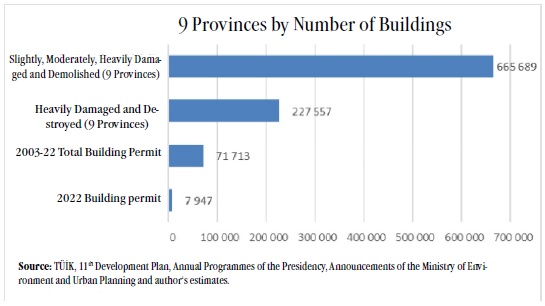
When we contemplate this table, we see that the construction sector, which constituted the most important pillar of capital accumulation of the „bourgeoisie opened to the exterior“ in the 80’s, will also create great resources from the „field of removal – transport – transformation of waste and debris“ with the earthquake. In view of the following data, it is known that an allocation of 58 billion Liras is foreseen in the field of waste and debris removal-transport-transformation alone. Furthermore, it is indicated that construction in the earthquake zone will take up a share of 8% over 5 years of the Turkish budget.
“The earthquake with epicenter in Kahramanmaraş caused a high level of destruction and damage in a wide geographical area spread over 11 provinces. The 7.7 and 7.6 magnitude earthquakes that occurred on February 6, 2023 in the Pazarcık and Elbistan districts of Kahramanmaraş caused loss of life and destruction in 11 surrounding provinces. The earthquake has caused massive damage to people and materials in 11 provinces, namely Adana, Adıyaman, Diyarbakır, Elazığ, Gaziantep, Hatay, Hatay, Kahramanmaraş, Kilis, Malatya, Osmaniye, Osmaniye and Şanlıurfa. According to our estimates, 40% of the buildings in the earthquake zone suffered minor, moderate and severe damage.
The massive destruction caused by the earthquake and Turkey’s construction capacity and development needs indicate that the reconstruction of the region will take 5 years. The buildings to be reconstructed exceed the annual construction capacity of the region and Turkey. According to the studies in the report, 650.000 independent units in the earthquake zone are collapsed or in need of urgent demolition, 170.000 units are moderately damaged, and 1.4 million units are slightly damaged. The 650.000 independent units, that have been demolished or need to be demolished because of the earthquake, is approximately 7 times the number of housing units according to the certificate of habitability obtained in 2022 in the 11 provinces affected by the earthquake. It is also above the number of habitability certificates issued in 2022 throughout Turkey. In view of the rehabilitation and repair activities of other earthquake-damaged buildings and the current need for housing throughout Turkey, it is considered that it is not possible to compensate for the earthquake damage in one year.
Independent units consist of various structures such as residences, workplaces, warehouses, utility units within buildings. In the year 2022, the number of housing units according to the occupancy certificate issued in 11 earthquake-affected provinces is 632.000 nationwide and 96.000 in 11 earthquake-affected provinces. According to official statements, housing construction is expected to be carried out mainly by the public sector. Also, it is expected that half of the construction of workplaces will be carried out by the public sector in order to establish economic activity. On the other hand, it is estimated that the costs of repairing and reinforcing homes and workplaces will be borne by homeowners.
The report indicates that the earthquake will generate a funding requirement of $150 billion over a 5-year period. The largest percentage of this cost corresponds to the cost of reconstruction, reinforcement and repair of the superstructure and infrastructure caused by the destruction in the region. The construction of infrastructure and superstructure is estimated to cost about US$88 billion, half of which will be financed by the public sector. The amount of this item is estimated at US$35 billion. The estimated 3-year cost of temporary housing, food, labor and employment support for earthquake-affected households is $24 billion. In order to compensate for the heavy impact of the enormous losses caused by the earthquake on the living standards and to support the most socially vulnerable households, it is recommended that temporary housing, food, work and employment subsidies continue for 3 years at a decreasing rate.”6
When we observe the data in the field of new capital accumulation, which support the above data and perspectives, we see the following picture:
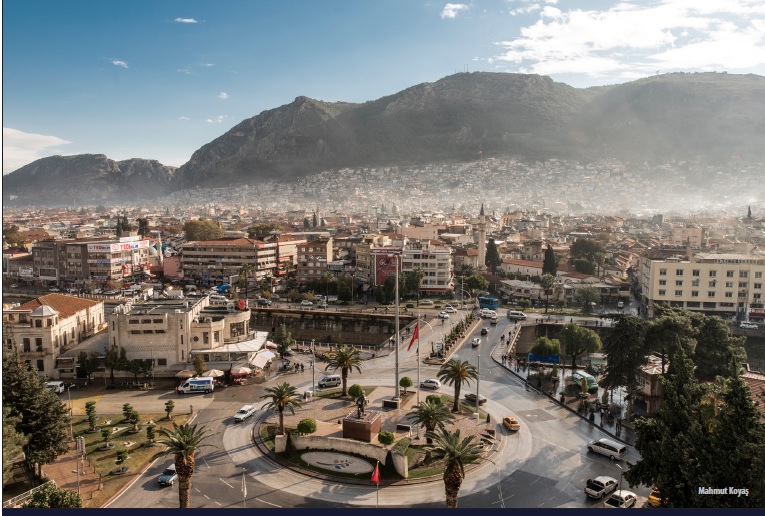
„According to data from the Ministry of Environment, Urbanism and Climate Change, damage assessment work was carried out in 387,410 buildings in 11 provinces affected by the earthquake. The number of buildings with moderate damage was found to be 11.114, buildings with slight damage 99.300 and buildings with no damage 180.355. As for the buildings examined, 50.576 were found to be heavily damaged or had collapsed, so the damaged buildings needed to be demolished urgently.
Experts in the industry estimate the cost of debris removal for each building to be about 250.000 TL. If 50,576 buildings are considered, the demolition and debris removal bill is estimated at 12.6 billion TL in the first phase. Representatives of the industry claim that a value of 5 billion TL can be created by recycling the rubble, and draw attention to another issue; that the recycling should be carried out under public control.”7
As a person who has closely followed the ruthless implementation of this capital accumulation regime in Hatay for 7 months, I would like to draw attention to the following statistical data:
„Within the scope of debris removal works carried out under the coordination of Hatay Governorate, debris from 12.052 demolished buildings was removed, 9.218 buildings that needed to be demolished urgently were demolished and demolition waste was transported. In total, debris from 21.270 buildings was transported to temporary dumping areas.
A total of 4.243 construction machines, including 1.038 excavators and 3.106 trucks, have been used in the debris removal work, 546.817 truck runs have been made so far, and the demolition waste transported to 26 temporary storage areas determined throughout the province has reached 7.028.946 cubic meters.
As a result of the evaluation of the notices and objections, the work and bidding procedures for the demolition of approximately 51.000 buildings in the province, which are in the state of heavily damaged buildings, and the transportation of demolition waste have been largely completed under the provisions of the State Bidding Law No. 2886.”8
PLUNDERING OF
AGRICULTURAL LAND AND OLIVE GROVES
One of the notable examples of Turkish capitalism’s policy of capital accumulation through predatory destruction in Hatay is the expropriation of 7.000 decares of land consisting of agricultural land and olive groves in the Dikmece region of the central district of Antakya and its allocation for buildings to be constructed by TOKİ. A lawsuit for suspension of execution was filed against this decision, which reached the Turkish agenda with the resistance of the people of Dikmece, and the Court made an interim decision and requested documents from the relevant ministries and institutions. The resistance of the villagers and environmentalists to protect their land and olive trees is clearly shown in the following news item.
A large number of citizens gathered in the Çiftlik neighborhood to hold the „Great Meeting of Dikmece“ and protest against the TOKİ project planned to be built in the region.
The struggle of the residents of Dikmece village in Antakya continues after the expropriation of agricultural land and olive groves. The neighbors and citizens from many parts of Turkey gathered at the Dikmece Great Gathering, which was expropriated after the earthquake and is planned to be built by the Mass Housing Administration (TOKİ)…
The resistance marched with banners reading „From Dikmece to Akbelen, let’s grow the resistance against looting“, „We will not surrender to expropriation“, „Capital out, these lands are ours“,
The march also counted with the participation of the Akbelen resistance who resisted for their lands in spite of the attack of the gendarmerie.”9
The following text, which legitimizes this resistance in constitutional-legal terms and deciphers the capitalist destruction concerning the food supply, the most basic need of humanity, adds an important dimension to the photograph of the process.
„Law No. 7456, known for short as the Omnibus Law, entered into force upon its publication in the Official Gazette of July 15, 2023 under number 32249.
The deadline to file with the Constitutional Court an appeal for the annulment of Article 25 of Law No. 7456, which foresees the spoliation of olive groves and forest areas in 11 provinces of the earthquake zone and which is contrary to the Constitution, ends on September 13, 2023. All parties of the Turkish Grand National Assembly, especially the main opposition party, deputies, press organizations, democratic mass organizations and public opinion are informed of this.
1. Article 25 of this law, published in the Official Gazette dated July 15, 2023 under number 32249, contemplates the opening of forests and olive groves for construction, so to speak, with an understanding that ignores the Constitution and the law.
2. Article 169 of the Constitution: Despite the fact that the Constitution clearly states this, enacting a law that provides for the concession of 1.000 square meters of forest per each right holder means disregarding the Constitution. The intention here is to massacre the forests for seismic reasons. This is another form of seismic opportunism. The forest ecosystems of the 11 provinces affected by the earthquake will be fragmented and destroyed and all plant and animal species will be harmed. Groundwater and spring water will be adversely affected in this time of water shortage.
3. The sentence „In villages and rural areas where land selection has not yet been done“ in the relevant article is an indication of lack of preparedness, uncertainty and foresight. Villages in some of the earthquake-hit provinces have been converted into neighborhoods under the metropolitan law. It is not clear with what criteria and by whom the „rural areas“ will be determined, nor how long this situation will last. Such a confusing law runs the risk of being applied in different ways in different provinces.
4. The amendments introduced by Article 25 are contrary to international conventions that Turkey has signed and to which it is a party. For example, they are contrary to the Convention on the Protection of Biological Diversity. They are also contrary to the decisions taken at the European Conference of Forestry Ministers held in 2007. The 2007 decisions clarify the following:
a) Forests should be protected without a doubt because of their role in the production of clean water,
b) They should also be protected within the framework of renewable energies.
5. The amendment contemplated in Article 25 is contrary to Law No. 3573 on the Improvement of Olive Groves and Grafting of Wild Olive Trees, and endangers Turkey’s food security. Due to the opening of forests, olive groves and olive areas to construction, not only these areas, but also other ecosystems (forests, wetlands, agricultural areas, steppes, etc.) will be negatively affected and damaged. At the same time, the inhabitants of the region will also be socially, culturally and economically harmed.
Last year, the political power introduced on the agenda the draft law providing for zoning and construction on olive groves, which was withdrawn after the population went to the Parliament in Ankara and reacted. Through this omnibus law, the government has shown that it withdrew the bill not because it realized
its mistake, but because it feared the public reaction. Now, taking advantage of the earthquake, it has added Article 25 to the omnibus law. This omnibus law, which provides for the opening of forests and olive groves for construction with an understanding that neither the Constitution nor the law recognizes, must be annulled.”10
CAPITAL ACCUMULATION BY DISREGARDING
LIVING BEINGS
The Chamber of Physicians of Hatay published the following report revealing that Turkish capitalism, with its predatory and destructive character, disregards human health and the right of citizens to live in a healthy environment, one of the most fundamental rights defined in the Constitution.
“In the continuous measurement conducted on June 10 and 11 for 22 hours and 13 minutes, the average PM2.5 was 48 μg/m3. This value is more than 3 times higher than the 24-hour reference value of the WHO. The highest PM2.5 value measured on the same day was 185 μg/m3.
In the continuous measurement conducted on June 16 and 17 for 23 hours and 16 minutes, the average PM2.5 was 16 μg/m3, above the reference value.
In the continuous measurement conducted on July 10 and 11 for 21 hours and 10 minutes, the average PM2.5 was determined to be 17 μg/m3. This value is higher than the 24-hour reference value of the WHO. The highest PM2.5 value measured on the same day was recorded as 121 μg/m3.
Considering only measurements taken during the period closest to the 24-hour measurement, the 24-hour average PM2.5 concentrations, which according to WHO should not be exceeded more than 3-4 days per year, were exceeded for 3 days. It is clear that the risk of exceeding this reference value is much higher if measurements are made without interruption.”11
SOCIAL SOLIDARITY
AND STRUGGLE
The statements mentioned above by İbrahim Göçmen, one of the leading lawyers of the lawsuits filed with criminal complaints about the legal dimension of the destruction caused by the earthquake, provide a picture of what the plundering of the capital order has done in Hatay. One of the key points of this situation is the lawsuit for „annulment of Presidential Decree No. 7033 on the declaration of the area of Antakya district of Hatay province, whose boundaries and coordinates are shown in the attached sketch and list, as a ‚risk area‘ in accordance with Article 2 of Law No. 6306 on the Transformation of Disaster Risk Areas“ filed with the Supreme Court with the request for suspension of execution, in which ASİ-DER, KADOP and HATSEP are also involved. This case, which will be analyzed in detail on pages 214-237 of our book „Hatay and Seismic Reality“, is important because it shows that looting capital wants to turn the earthquake into an opportunity to plunder historical-cultural zones. As a result of the struggle conducted by the Hatay Bar Association, KADOP, ASİ-DER and HATSEP against the conversion of 307 hectares of the Antakya protected area into „risk zone“, the transfer of the authority of this area to ÇSİB and TOKİ was prevented, and the authority was transferred back to the Ministry of Culture and Tourism in May 2023.12 This would be a small example of the achievements of the struggle. As a result of another effort carried out by the same organizations, an achievement was reached on the issue of qualification or examination on the basis of vertical equality for the candidates who will participate in the „Examination for Higher Education Centers from the Earthquake Region“. Other achievements have also been made in other areas before the Administrative Tribunals. It should be noted that these achievements are like sands in the desert.
The clearest proof that capitalists, who have no other concern than capital accumulation and profit, are driving our planet towards an uninhabitable point by causing climate change, is the unbearable heat of the summer of 2023. In the earthquake zone, especially in Hatay, thirst has become the main problem since the water networks in the cities were destroyed and were not repaired. People are desperately waiting in queues for water to be distributed by aid organizations.13 General and local public institutions leave the population helpless, so it is very important that organizations show solidarity with the people of Hatay and provide solutions.14 In order to show the technical dimension of social and political struggle…
The expropriation decision that opened the olive groves and agricultural areas in Dikmece to construction for TOKİ, as well as in Kazdağları, Akbelen, etc., is one of the important examples of capital accumulation of capitalism leading to social-cultural and environmental destruction in Hatay. The content and form of the struggle developed by the environmental organizations, in particular the residents of Dikmece, against this decision in July and August 2023 are also important. The residents, together with the mukhtar and the council of elders, need an overall strategy and tactics of struggle to jointly carry out the legal and operational struggle.
RESULTS AND ADVICE
„Example of Destruction by Earthquake under Capitalism: Hatay“ which we can support with many other examples, data and facts, clearly shows that the region is facing major problems, not only economic, but also social and psychological: The Mayor of HBB (Hatay Metropolitan Municipality), Lütfü Savaş, stated that half of the population migrated out of the province. The inhabitants of Hatay, as if the trauma of the earthquake were not enough, were deeply shaken by the disintegration of families due to emigration, unemployment and the problem of adaptation to the new place. Despite not having exhaustive data, as studies on the issue are ongoing, our observations, interviews and analysis show that if this problem is not urgently resolved, very serious psychological destruction will occur. [15.Kemal Dil-Müslüm Kabadayı, „Report of Thoughts on Hatay“, Hatay and Seismic Reality, Editorial Sonçağ, Ankara,
2023, p. 261-271.] Having already exposed through data the way in which the destruction of natural earthquakes has been turned into disaster by capitalism, and having already exposed that this is due to the political economy and structure of capitalism, to fail to see that the fundamental solution is the overthrow of the capitalist order it is necessary to close our eyes to the facts. We must urgently put on the agenda of the workers the imperative need to overthrow the regime of capital accumulation, which we have codified as „GPD“, which destroys our source of life, nature, the consciousness of human beings to live in equality and freedom, and the value of social solidarity, and establish the regime of Socialist Turkey as a social order that puts equality and freedom at the center of the country’s natural and human resources.
Regarding what all workers and laborers in Turkey, and the people and institutions responsible for enlightening and organizing society, should urgently incorporate into the agenda…
To prevent a second disaster, the following urgent measures should be taken:
– There is an urgent need to develop a large-scale scientific plan on the seismicity of Turkey. At the same time, a new scientific report on the seismicity of Hatay should be prepared, taking into account the process after the February 6-20 earthquakes.
– According to the aforementioned report, earthquake-resistant zones for the resurrection of destroyed cities should be determined and built accordingly.
– The historical and cultural places of Antakya, Iskenderun, Kırıkhan, Samandağ and Arsuz should be arranged according to their texture. Protected sites must be preserved.
-The agricultural and forest areas of Hatay, and any such places in the country, should not be opened for construction.
– The cultural and demographic texture of the destroyed cities, especially old Antakya, should be preserved, and walkable urbanization plans should be implemented.
-In the same way as should be done in the entire earthquake region, measures should be taken to revitalize economic and social life to enable Hatay residents who migrated to return to their land.
– Educational, cultural and artistic institutions should be put into operation without delay.
* This article is published simultaneously in
PoliTeknik Turkish edition, PoliTeknik International
and PoliTeknik Español.
- .https://www.gazeteduvar.com.tr/sermayenin-akbelendeki- besin-zinciri-makale-1630784
- .Tuğçe Tezer, "Antakya Earthquake in the Footprint of Continuity and Ruptures", Hatay and Seismic Reality, Editorial Sonçağ, Ankara, 2023, p.272-273
- https://sendika.org/2023/07/hatay-ve-deprem-gercegi-halkla-bulusmaya-devam-ediyor-fiziki-sosyolojik-ve-psikolojik-yikima-karsi-dayanismayla-direniyoruz-689185/
- https://www.evrensel.net/haber/481724/felaket-gozgore-gore-geldi-hatay-valiligi-2021de-7-7lik-marasdepremi-senaryosu-hazirlamis
- Attorney İbrahim Göçmen, Correspondence from the Old Antakya Solidarity Platform, August 6, 2023. 6 Burcu Aydın Özüdoğru (Director of the Center for Economic and Structural Policies),
- Burcu Aydın Özüdoğru (Director of the Center for Economic and Structural Policies), EFFECTS OF THE 2023 KAHRAMANMARAS EARTHQUAKE AND POLICY RECOMMENDATIONS, www.tepav.org.tr 37 https://www.aydinlik.
- https://www.aydinlik.com.tr/haber/depremin-yikim-veenkaz-kaldirma-bedeli-ne-kadar-368305
- https://www.iskenderunses.net/habe/enkaz_kaldirildi_agir_hasarli_bina_yikimi_basladi-18478.html
- https://haber.sol.org.tr/haber/dikmecede-buyuk-bulusma-sermaye-halka-hesap-verecek-383191
- Press release from the Board of Directors of the Association for Research on Rural Environment and Forestry Problems, August 23, 2023.
- https://ttb.org.tr/haber_goster.php?Guid=c06b315c-4638-11ee-a2a3-83c14101434b
- https://www.dha.com.tr/politika/bakan-ersoy-antakyanin-genelini-kapsayacak-bir-imar-yapisini-olusturacagiz-2291419
- https://www.cumhuriyet.com.tr/turkiye/hatayda-su-yoksorun-cok-2099070
- https://www.gazeteduvar.com.tr/tkp-hatayda-endustriyel-su-aritma-cihazi-uretti-haber-1613785


